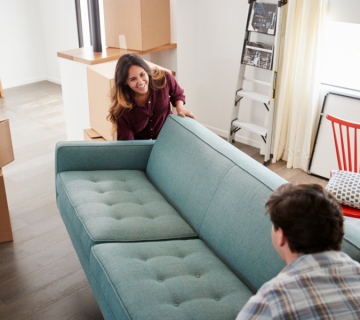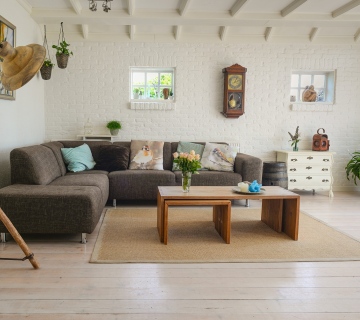Keeping rental properties safe from external intrusion and internal hazards is the responsibility of the property owner. While the tenants may make slight contributions, their responsibilities are limited to and only dictated by the leasing agreement. They may be willing to install security fixtures such as alarm lock systems to keep the burglars out, but they will definitely shy away from chipping in on more expensive disaster-proofing measures because of temporary residence. Therefore, the buck stops with you, as a property owner, since you are likely to lose the most in the advent of a serious disaster. Failure to make your property a safe haven will make it undesirable for the tenants, and they will move to a more secure property. So, how do you disaster-proof your rental property?
Protection Against Falls
Injury-related falls are among the most common household hazards. According to the CDC, there has been a 30% increase in fall death rates in the US from 2006 to 2016. One out of five falls leads to serious injury among the elderly, such as traumatic brain injuries (TBI) or broken bones. While children and the elderly are the most vulnerable, nobody is immune to falling. To minimise the risk of falling, you have to make various structural modifications, such as:
- Stabilising staircases by installing sturdy handrails, non-skid treads and safety gates (for children) and providing adequate lighting. You may also add mats or grip tape on outdoor steps.
- Fall-proofing the bathroom floor by using a secure rug or rubber-backed bathmats. To make the shower floor less slippery, you may use non-slip strip sticker treads on the shower floor. It also helps if you add safety rails and bar supports in the toilet and shower areas to provide extra support for the young and the elderly.
Protection Against Fire
Fire-related accidents are also very common in households, with more than 490.000 incidents reported in 2017 alone. The household is filled with so many things that could either start a fire or act as fuel for it. As a landlord, it is imperative to set up measures that will prevent the fire from getting out of hand. The first way to minimise fire risk is to install fire alarm systems on all levels of the property. The system(s) will monitor any sign of smoke or rising temperatures and go off. You may go for modern alarm systems that are operated remotely using a smartphone via Wi-Fi. They are more reliable as they provide real-time updates on the status of the home. Aside from initial installation, make sure you also provide routine checkups regularly to ensure the systems are working perfectly.
It is also advisable to provide at least one fire extinguisher in the kitchen to put out small fires, before they become uncontrollable. Seeing that the kitchen is the place with the highest risk of fires, we would advise you to install a fire duct or a kitchen exhaust system with a hood on top of the range. A fire duct reduces fire risks by expelling the grease vapours from the cooking pot. This reduces grease vapour build-up in the kitchen, which may act as a potential fuel source for the fire. Furthermore, the fire duct has a super-efficient fan that gets rid of nasty odours and vapours, allowing the house to smell fresh and clean.
 Prevention from Carbon Monoxide (CO) Poisoning
Prevention from Carbon Monoxide (CO) Poisoning
While low levels of carbon monoxide can lead to headaches and dizziness, high levels of CO are very toxic and can lead to death. What makes this gas deadly is that it has no smell, taste or sound and it is due to these reasons that it is described as a silent killer. According to the CDC, at least 400 Americans pass away each year from accidental CO poisoning. Carbon-monoxide is prevalent in every home, as it is released through combustion.
You can protect your tenants from CO poisoning by installing a CO detector that will go off when there is build-up of this poisonous gas. Also, care to offer regular maintenance and replace the detector after every five years. In addition, ensure that all utility systems, such as the water heater and heating systems plus gas/oil/coal-burning appliances, are regularly serviced by a qualified professional. We cannot, however, emphasise enough the importance of installing a fire duct in the kitchen, as it can also offer protection against carbon-monoxide by sucking and expelling it out.
Prevention from Burglary and External Intrusion
As a property owner, you need to also to protect tenants and their property from break-ins and unlawful entry. In America, a home burglary occurs after every 15 seconds and about 30% of them are categorised as unlawful entry or entry without force – either through an unlocked door or window. Renters prioritise security as the number-one factor that attracts them to a house. Therefore, securing your house will give them some level of satisfaction that they are in the right place and they are likely to lease your property for a very long time.
The first step to securing a home is installing a security system. There is a wide selection of security systems you can choose from. Just make sure it has door and window sensors and motion-detecting lights. Some sophisticated models even include smoke and fire sensors and can be operated remotely by a smartphone. Another measure is to install proper external lighting. Burglars are more likely to bypass a well-lit house than a poorly lit one. You can even it take it a notch higher by installing motion-sensing lights that activate when someone approaches the house from any direction. Also, you need to secure doors and windows by using sturdy wood or metal for doors and installing locks on windows.
While disaster-proofing your rental property may seem too steep from the financial standpoint initially, it is actually very rewarding in the long run. Renters will feel secure and satisfied, which will prompt them to lease your property for a much longer period. The reverse is also true, failure to disaster-proof your property will dissuade them from leasing it. Good luck.




